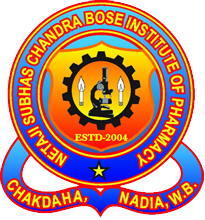Estrogens play an important role in breast cancer development. Aromatase (CYP19), a cytochrome P450, is the enzyme that synthesizes estrogens. Through cell culture studies, it has been seen that in situ produced estrogen plays a more important role than circulating estrogens in breast tumor promotion. tumor aromatase has been shown to stimulate breast cancer growth in both an autocrine and a paracrine manner. So that, aromatase-inhibitor therapy is considered for second-line treatment in patients who fail anti-estrogen therapy.
During study, receptor based and ligand based 3D-QSAR pharmacophore techniques used to rationalized pharmacophore features to develop new one as NSAIs. Different scaffolds based derivatives from their database are used to design new molecule. Thiochromen-4-ones and chloro/bromo quinoline-4(1H)-ones derivatives were used for trails.
During literature survey, it has been found that imidazolylmethyl, triazomethyl & pyridylmethyl derivatives showed good activity against aromatase. Imidazomethyl and cyano groups are important to make a H-bond interaction with SER478 of aromatse enzyme.
To do the experiment 3EQM ( PDB ID ) was utilized during 3D-QSAR studies. Ligand based & receptor based study were done by PHASE module & GLIDE module respectively. Researchers have taken flavonoids derivatives for trail as the structure of it is quite resemble to the structure of estrogens. So, these type of compounds can be used as competitive inhibitor.
During study,it has been seen that modifications in phenyl rings does not make any remarkable change in activities. Two H-bond acceptor sites contribute decisive role for their activities. Substitution at 3 position of thiochromen-4-one ring alter the activity. H-bond acceptor moiety can increase the activity. So , researchers used imidazole moiety to design a new molecule.
They have also seen that bioisosteric replacement can play a vital role for amplifying activities.
They replace the sulphur with nitrogen at position 1 of thiochromen-4-one scaffold and designed some quinolinone derivatives which increases the H-bond interaction sites.
Since cyano group shows crucial role in H-bond interaction, they designed some molecules by incorporating cyano, nitro and other halogen groups in 2 and 6th positions to see the changes in their functions.
Finally after biological studies of designed and synthesized molecules by using standard protocol, they have conclude that most active molecule shows its activity in 49.3nM range.
